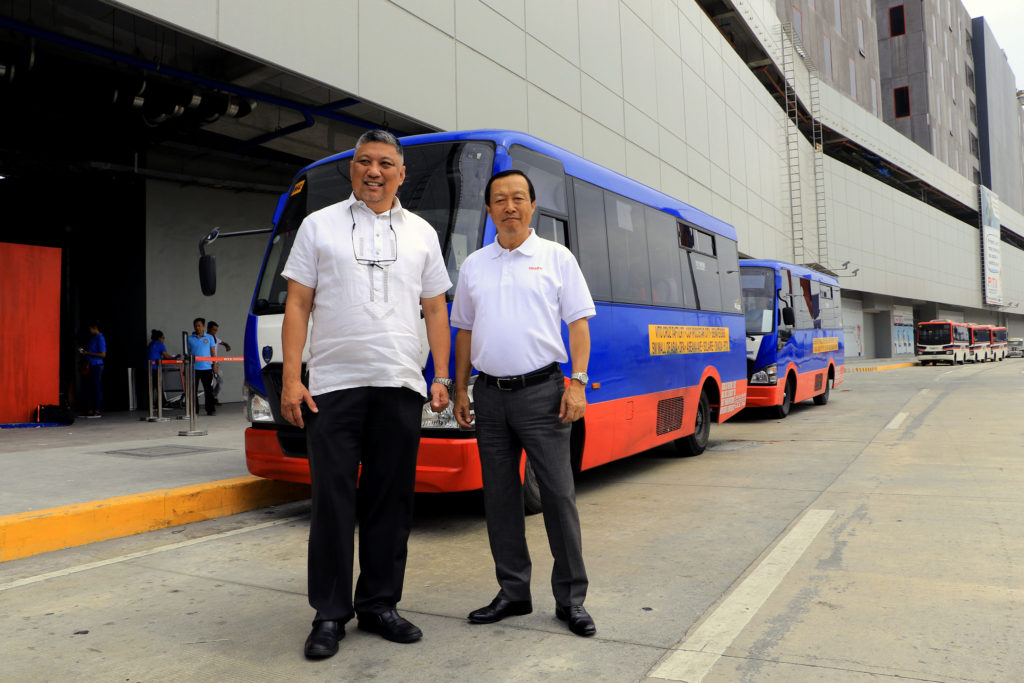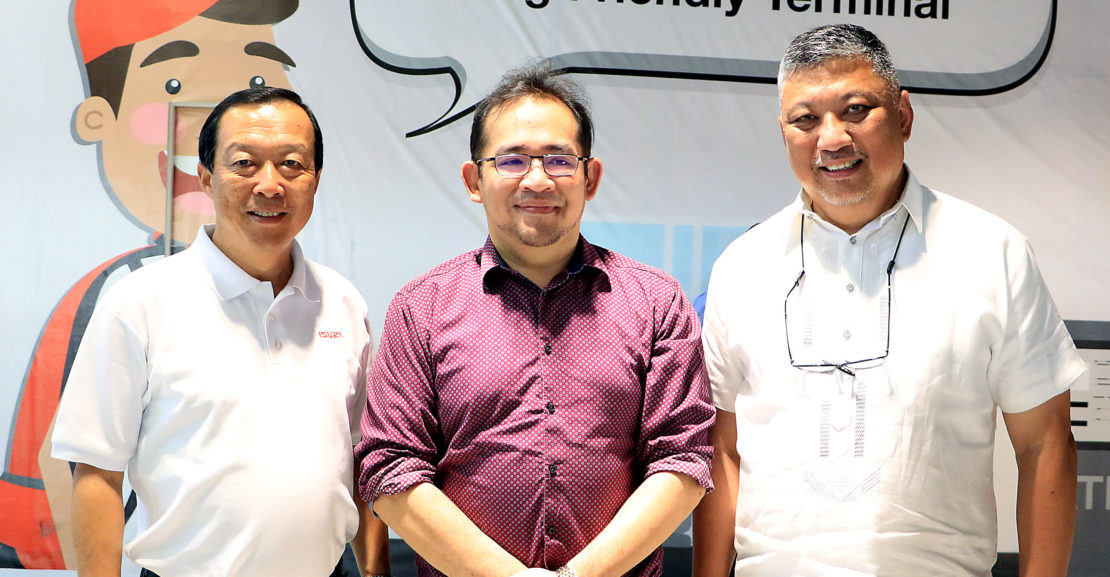The executives of Isuzu Philippines Corporation (IPC) recently visit the newly Paranaque Integrated Terminal Exchange (PITX) in Parañaque City to witness how Isuzu’s modernized public utility vehicles (PUVs) are helping enhance PITX’s services and operations.
The officers and executives were transported to PITX on board an Isuzu QKR77 cab and chassis platform modernized PUV with the rear body designed and manufactured by Almazora Motors Corporation. This new PUV is one of the 15 units franchised to the Senate Employees Transport Service Cooperative (SETSCO), which currently plying southwest Manila route from the Cultural Center of the Philippines (CCP) to PITX, and vice versa.

Compared to other PUVs, the new modernized body of Isuzu is relatively configured into a Class 2, 23-seater and air-conditioned. The body is compliant with Philippine National Standards (PNS 2126:2017). What makes this PUV different from the rest is the passenger cabin floor-to-ceiling height, which provides more space for passengers to move easily inside. In terms of safety, passenger door is located at the right-hand side facing the sidewalk. There’s also panoramic windows and windshields, full-body insulation with GeneQ shield, automatic door closer, ECE-compliant headlamps, brake system, wipers, windshield washer, and side view mirrors. Best of all, it has a provision for persons with disabilities!
To complete its modernized image, Isuzu include additional value features such as LCD/LED TV monitors, electronic signages, fire extinguishers, GPS navigation system, CCTV, dashcam and back-up cameras, and the automatic fare collection system—all geared for passengers’ safety, entertainment, and added convenience in fare collection.
The PITX, built and operated by Megawide Construction Corporation and the Department of Transportation, started operations last November 5, 2018 under the Public-Private Partnership program. The terminal is projected to be able to handle up to 200,000 passengers daily, servicing the following routes in the Cavite and Batangas provinces: Kawit, Noveleta, Cavite City, Tanza, Naic, Maragondon, Ternate, General Trias, Trece Martires, Indang, Bacoor, Imus, Dasmarinas, Silang, Amadeo, Tagaytay, Mendez, Alfonso, Nasugbu, and Lian.

